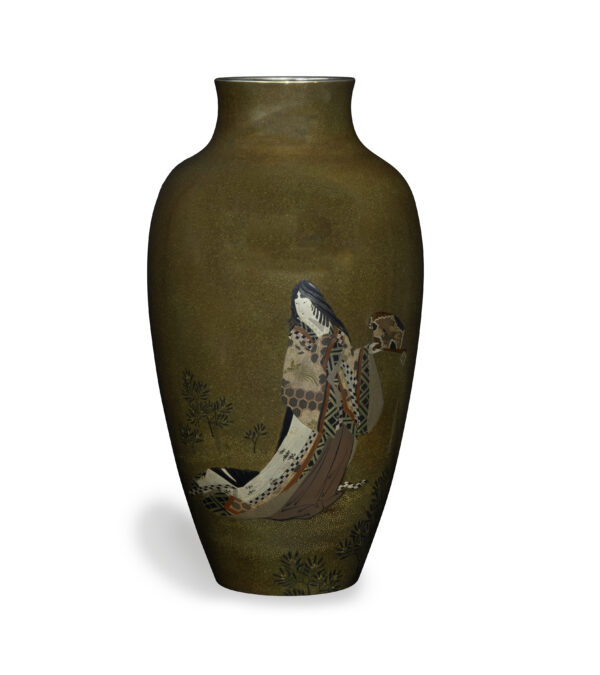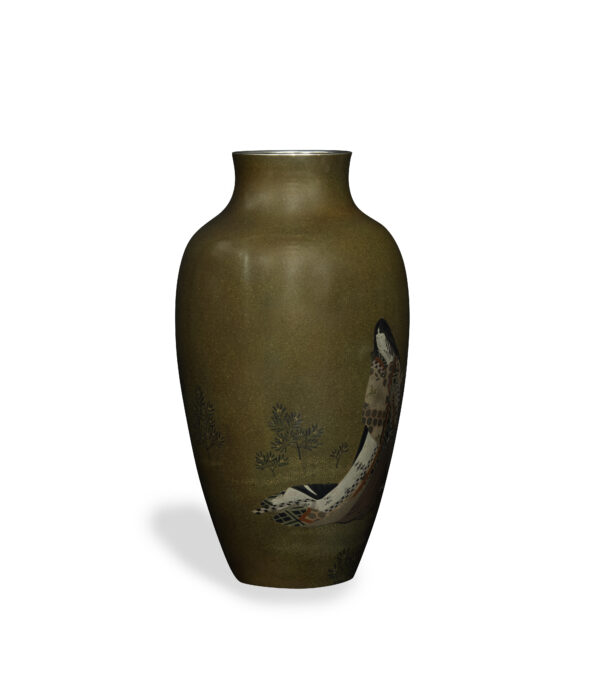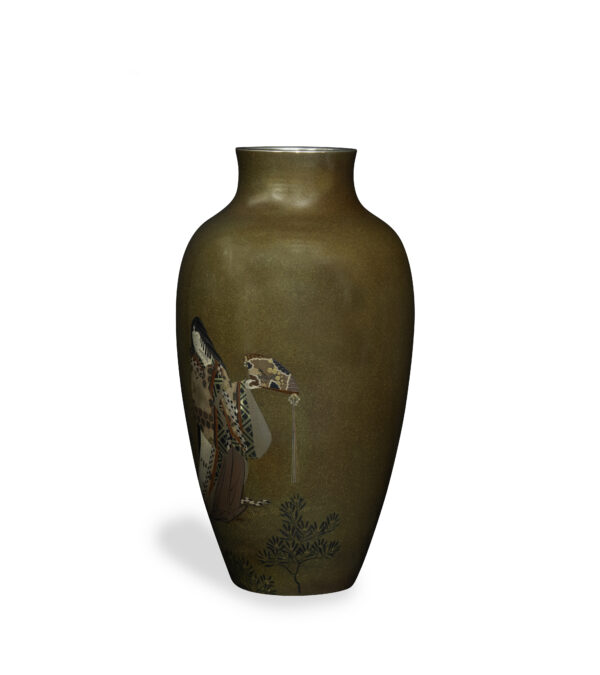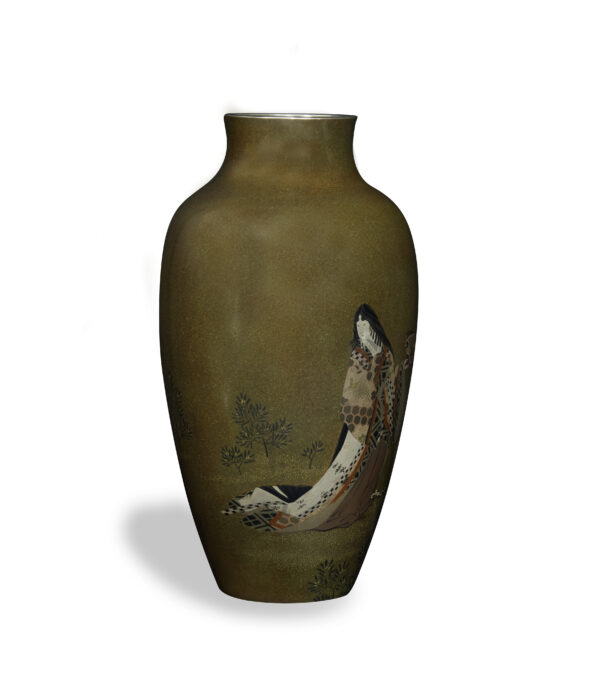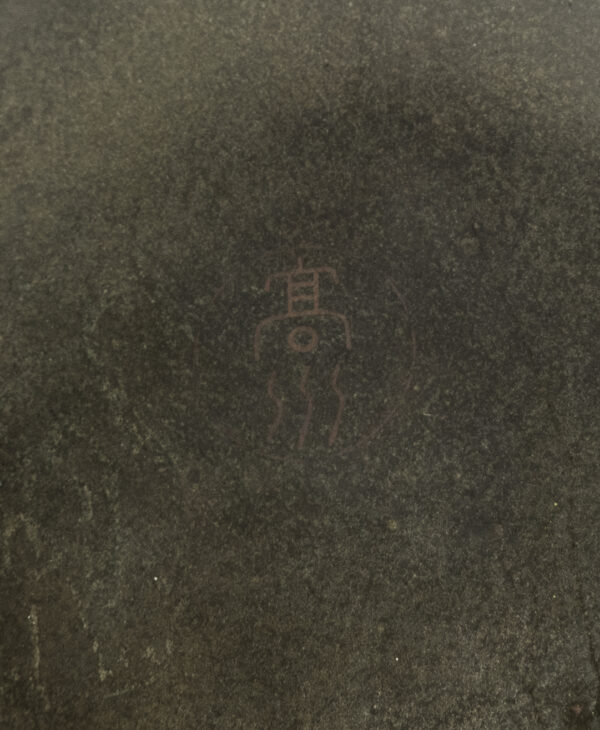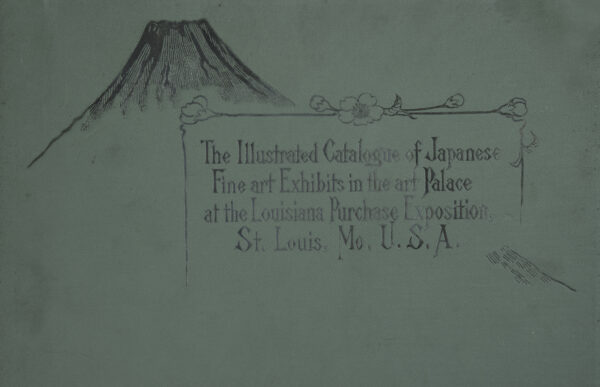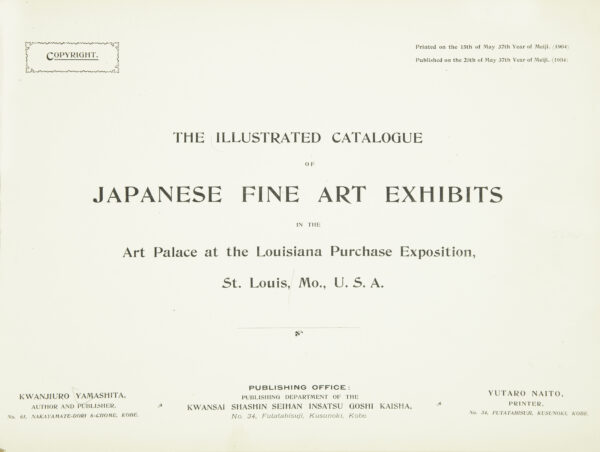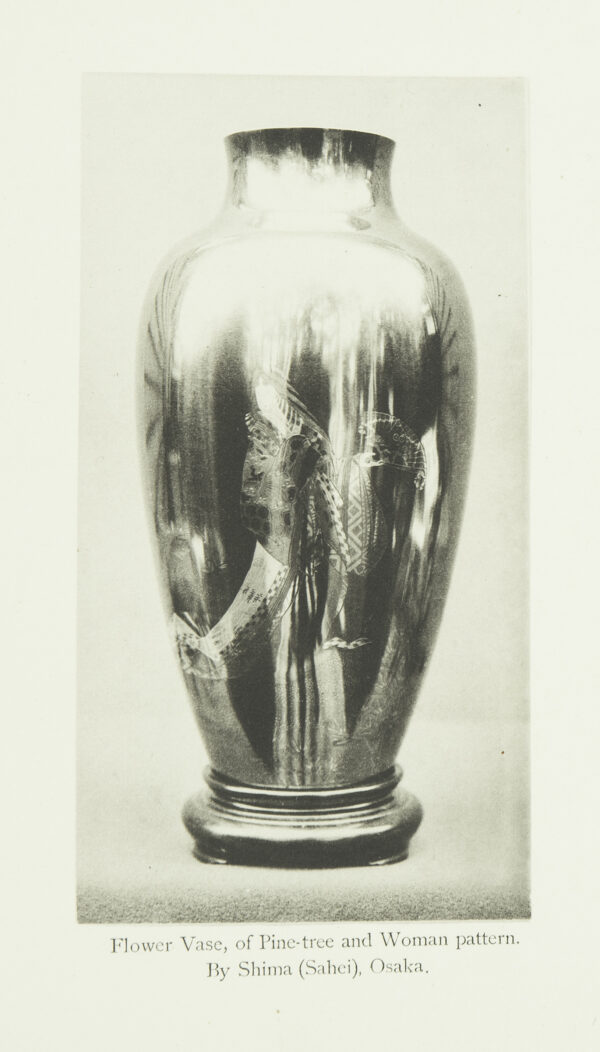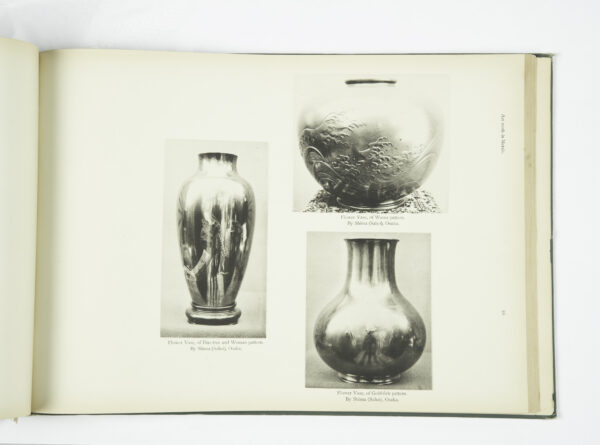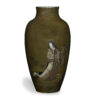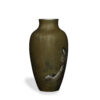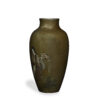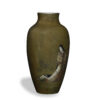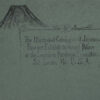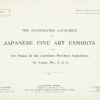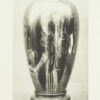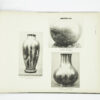As part of our Japanese works of art collection we are absolutely delighted to offer this most charming exceptional quality Meiji Period (1868-1912), bronze and mixed metal vase that formed part of the Japanese exhibits at the Louisiana Purchase Exposition of 1904. The main body of the vase is formed from an olive green bronze alloy upon which the artist has captured a study of a beautiful court lady amidst miniature pine trees, the inlaid detail and use of multi coloured alloys is just breathtaking . Her kimono is decorated with gold , silver, copper and shakudo alloys, which in itself is not uncommon, however what is most unusual are the mixed tones of shibuichi alloys, the artist must have experimented for hours to produce shibuichi tones ranging from grey and silver bands around her collar through to soft browns on her kimono, and a rarely seen purple cleverly highlighted with shakudo to produce the appearance of folds. The Court lady stands serenely holding a fan in her left hand with her long black hair falling across her shoulder, she stands among miniature pine trees that are painstakingly inlaid into the bronze with the use of shakudo along with minuscule gold inlays representing the grass around the base of the pines, the attention to detail is quite remarkable, the artist has finished the vase with a silver rim to the top and discreetly inlaid his signature in copper wire under the base.
Literature :
Remarkably, we have traced this exact vase to a grainy black and white image at page 59 of the 1904 St Louis exhibition book titled ; The Illustrated Catalogue Of Japanese Fine Art Exhibits In The Art Palace At The Louisiana Purchase Exposition. St. Louis, Mo. USA. ( See images) The official catalogue introduction simply titles the bronze vase as Court ladies gathering young pines , you will note underneath the image at page 59 reads ; Shima, Sahioye, Osaka. Further extensive research leads us to understand that this was likely the artists commissioning agent representing his pieces at the overseas exhibitions.
As is so often the case, the artists name would not be the focal point of a commissioning company’s display at such expositions, the agent would seemingly retain the rights to multiple artists works, their contacts were naturally protected and ring fenced under the agents banner, the agent presumably taking the financial risks to showcase these works whilst being rewarded with commissions on sales.
Artist Literature :
The faint copper seal beneath the vase simply reads Takagawa which leads us to the Takaoka City based artist Takagawa Seisaburo II (1849-1913), he moved to Kyoto where he is recorded as exhibiting at the 2nd and 3rd Naikoku Kangyo Hakurankai exhibitions in 1881 & 1890.
Two examples of this artists work can be found in the Toyama Museum , the first a round bronze plate with a cockerel and the second a bronze vase inlaid with Phoenix.
It may be worth noting that a Mr Takagawa was recorded as the head of design at the Takaoka bronze corporation , there were three generations of Takagawa Seisaburo I-II-III dates ranging between 1813-1925 , it would seem highly probable that one of this trio of artisans was this designer.
Provenance :
Recently discovered in a long standing UK gentleman’s Japanese works of art collection.
1904 St Louis Exposition.
Condition report :
Exceptional condition .
Approximate Sizes :
Height : 11 1/4″ 28.5 cm
Diameter : 6″ 15.2 cm
Free worldwide delivery and a certificate of authenticity are included within the price of this item.
